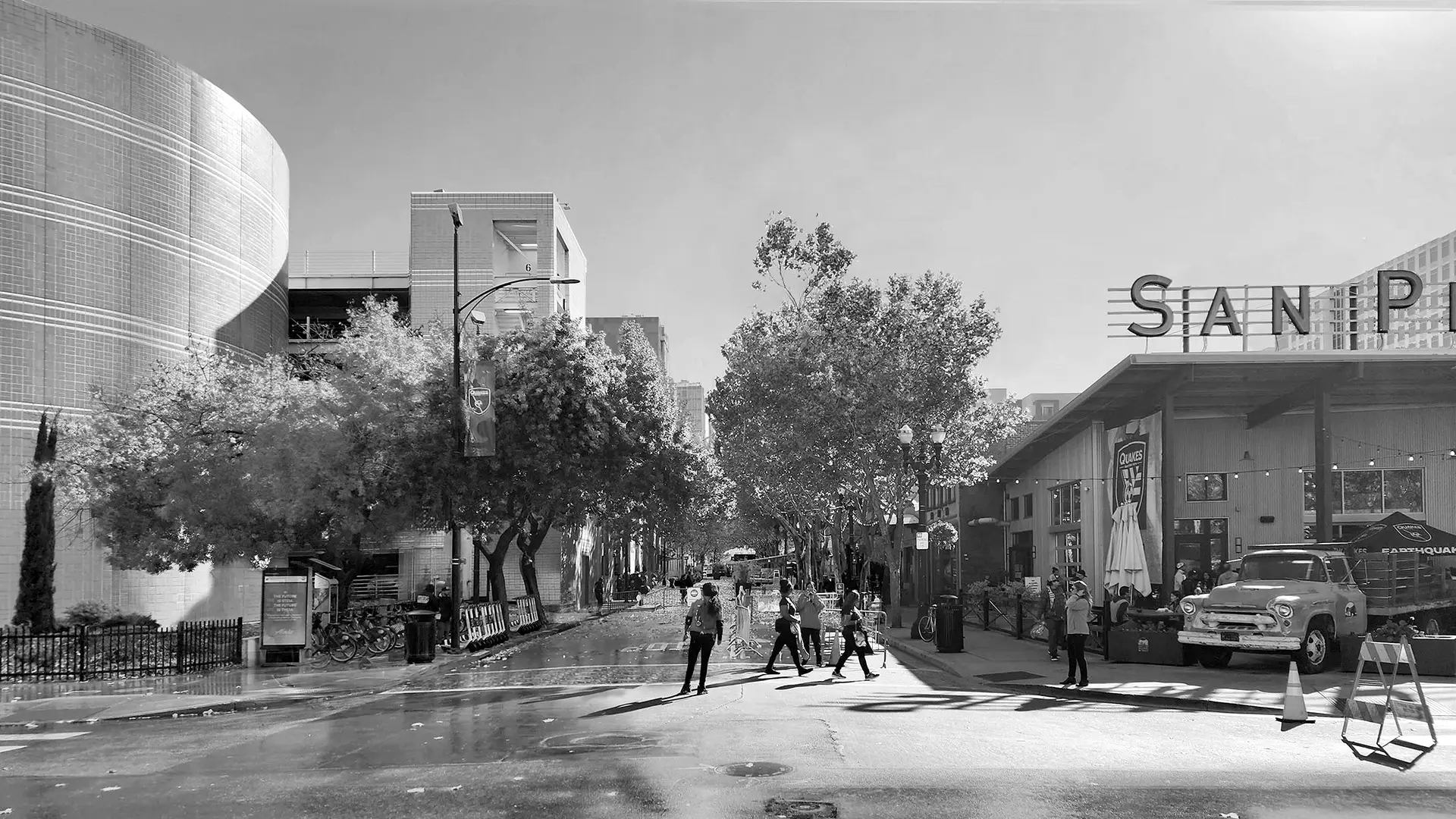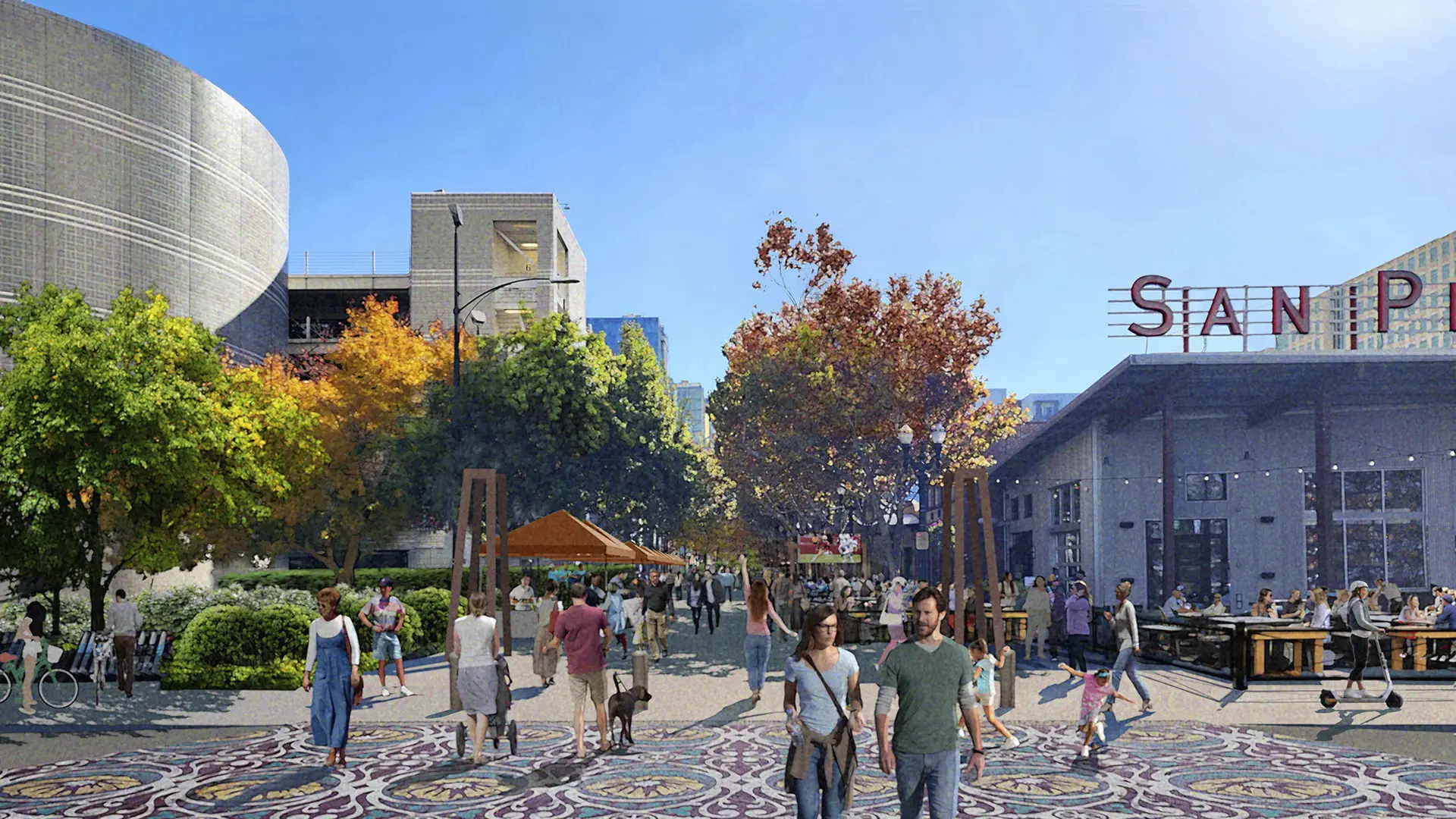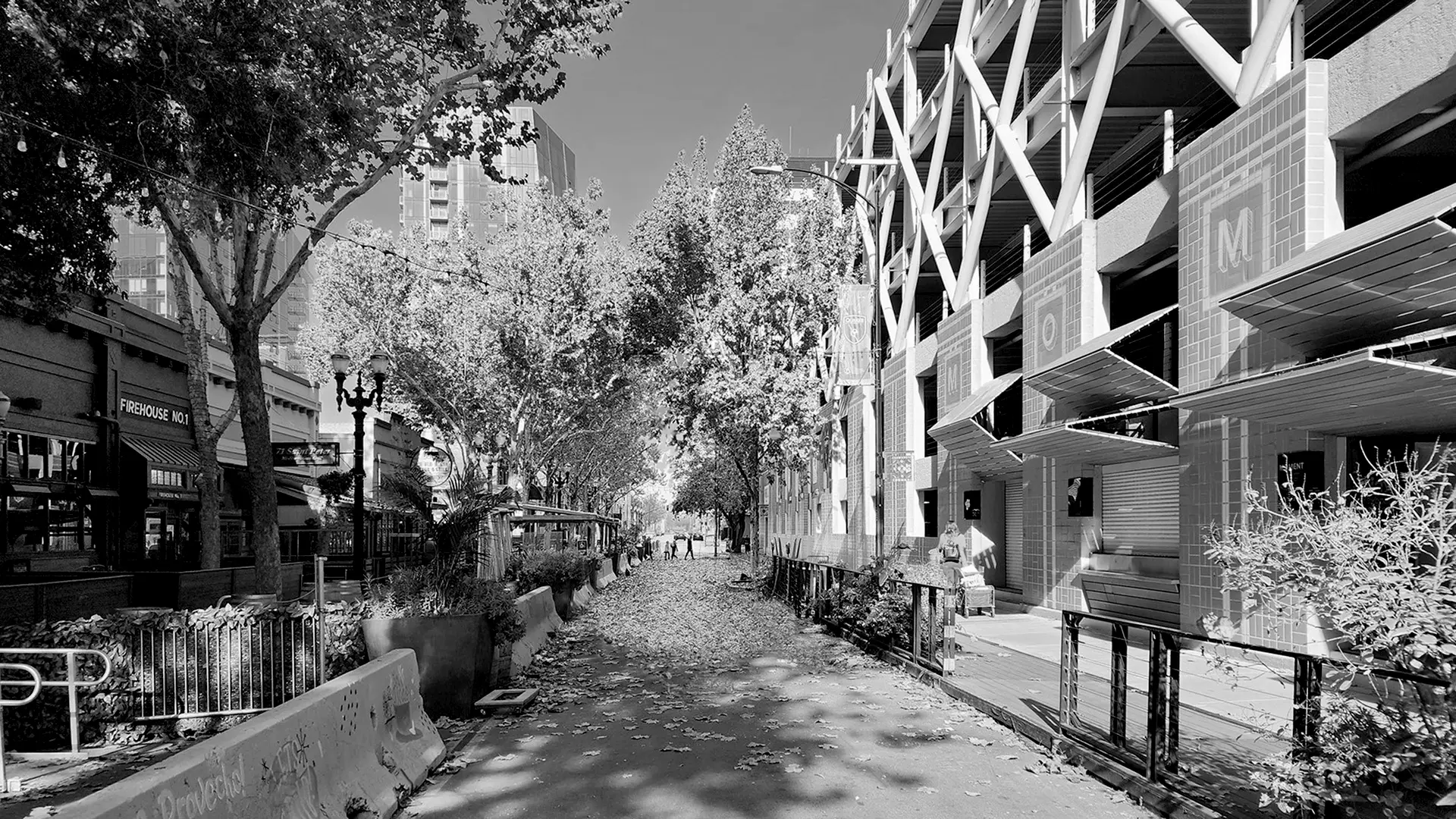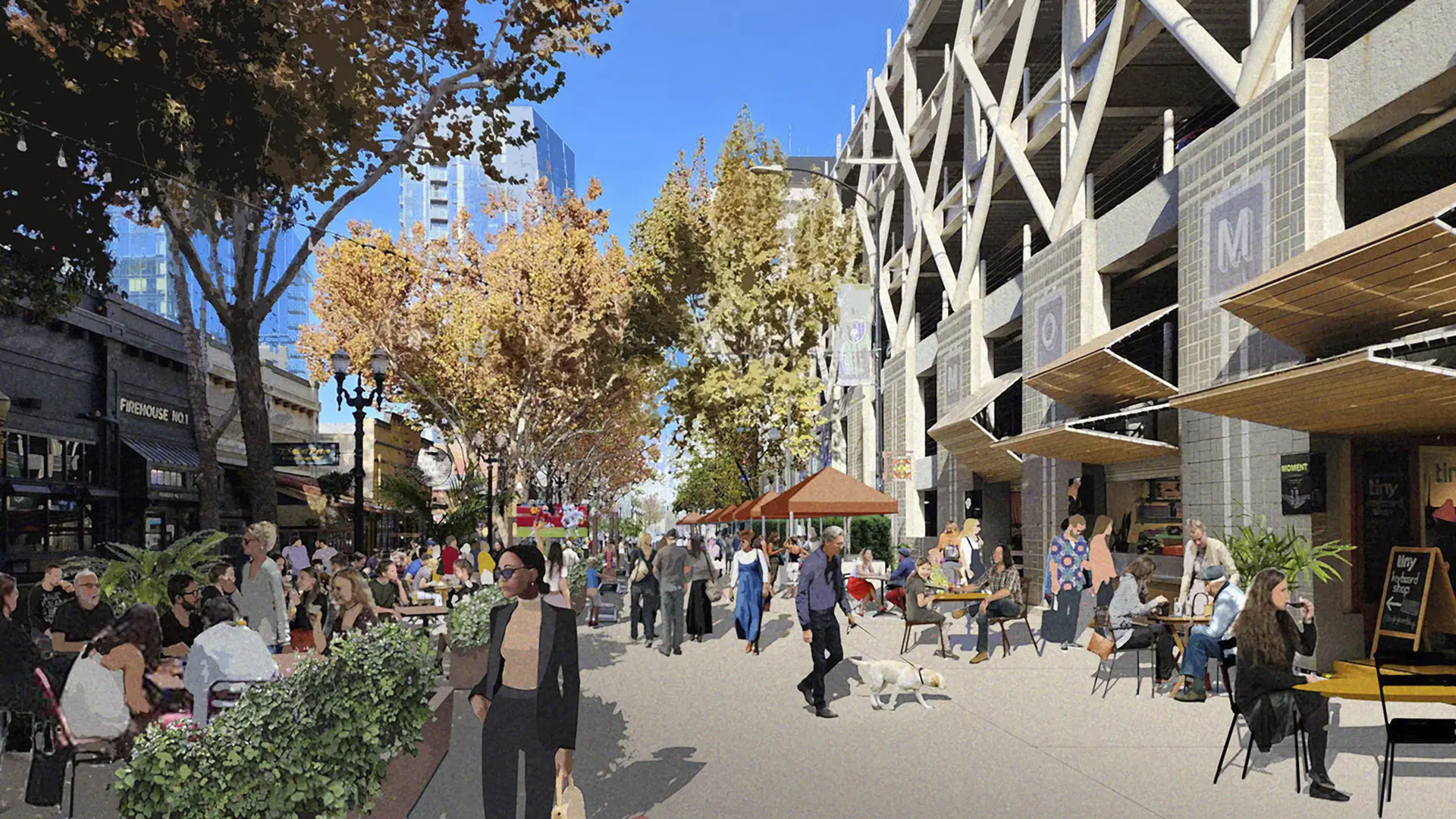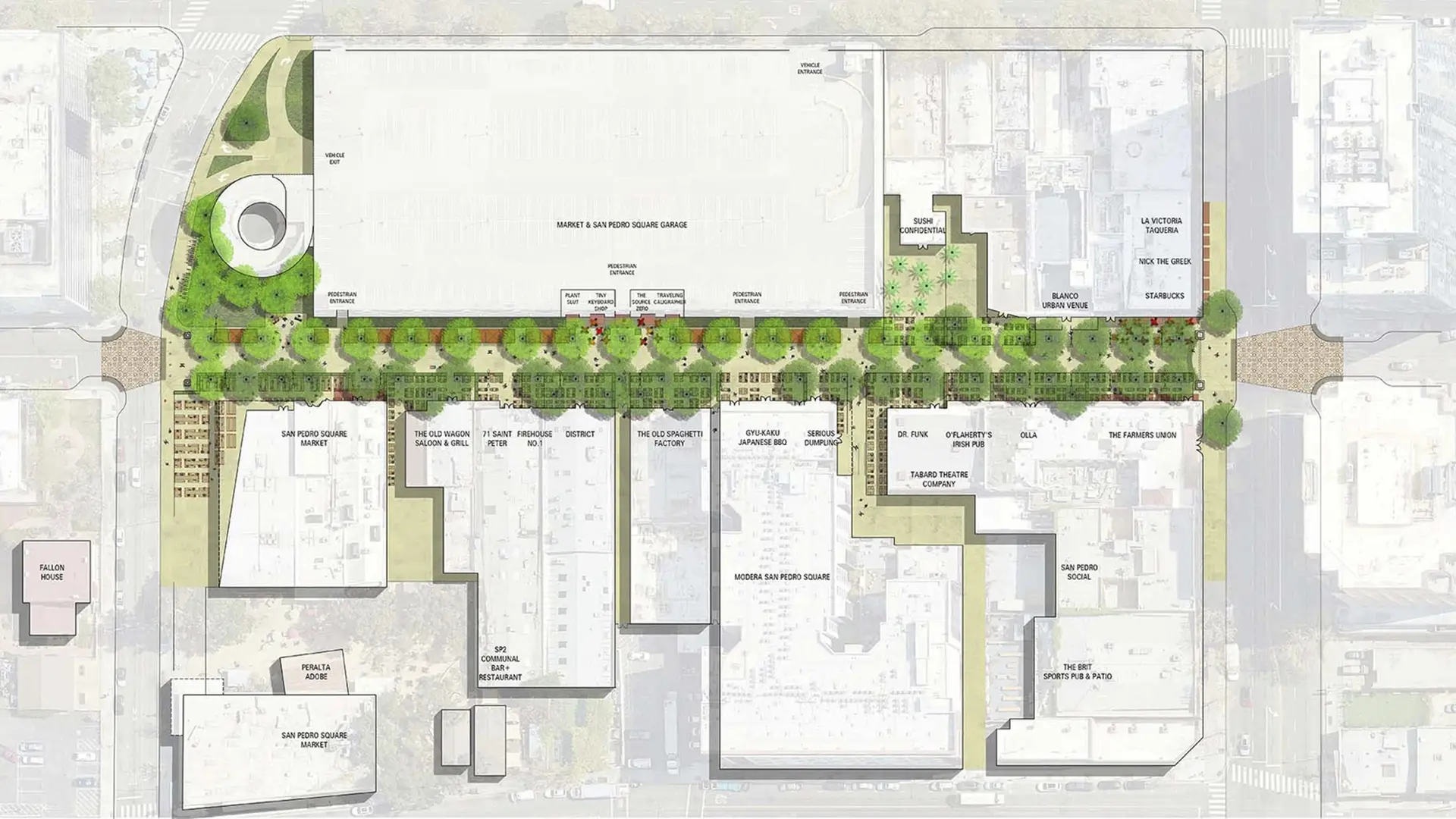SWA created a vision for transforming North San Pedro Street in the heart of Downtown San Jose into a vibrant pedestrian outdoor dining and socializing space, formalizing and enhancing what local restaurants and city leaders had begun during COVID-19. The design replaces the existing curbs and roadbed with plaza paving to create a continuous space for people without level changes. A central promenade that doubles as emergency and service access is flanked by street trees and generous outdoor dining and social spaces along business storefronts. A slightly wider midblock area creates an event zone for markets and festivals. By eliminating vehicles from the block, the design transforms the existing iconic Arch at Santa Clara Street into a pedestrian gateway, and adds a new “Market Entrance” at St John Street. Based on SWA’s vision, the City Council voted to permanently pedestrianize the street and pursue funds for the enhancements.
Jeddah Central District
For many Muslims making the holy pilgrimage to Makkah, the journey begins in Jeddah. Recognizing the resource strain from religious tourism, Saudi Arabia’s Vision 2030 plan outlined the need to address the city’s mounting concerns surrounding housing, mobility, and flooding.
SWA’s Central District master plan introduces 58,000 new acco...
Katy Trail
Katy Trail represents a remarkable resource for the residents of the Dallas Fort Worth region. This project enlivens and makes accessible right-of-way established by the storied, but later abandoned, Missouri-Kansas-Texas (better known as the “Katy”) line, and serves as a unifying element for the surrounding neighborhoods. Katy Trail provides appro...
Hi Line Connector
The Hi Line Connector spans one mile through Dallas’ Design District, linking two of the city’s most valuable urban core public assets: the Katy and Trinity Strand Trails. This transformative project introduces raised bike lanes and enhances the pedestrian experience by improving and realigning existing roadways. Beyond the physical infrastructure,...
Golden Gate National Recreation Area
In the early 1970s, the National Park Service began the enormous task of creating a new national recreation area in the midst of an urban center—the San Francisco Bay Area, home to 4.5 million people at the time. Riding the wake of the environmental revolution of the late 1960s, the Park Service would need to find consensus among a wide range of constituents, ...



